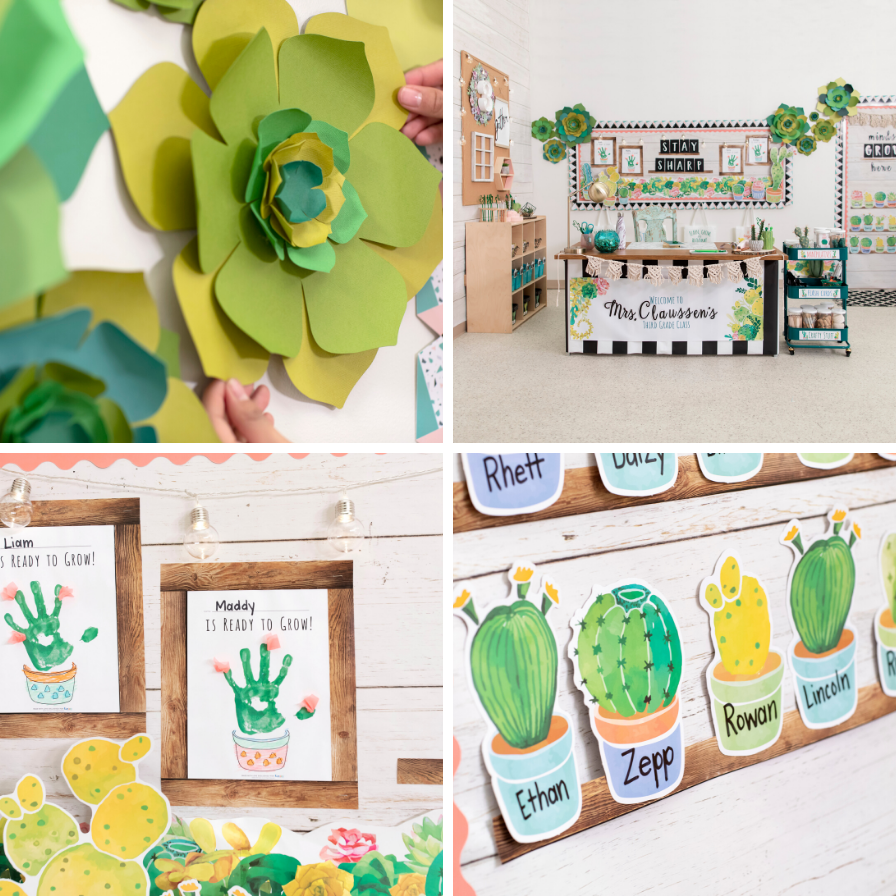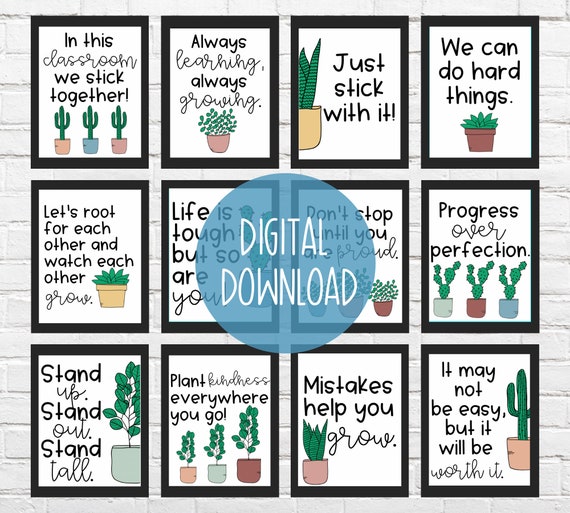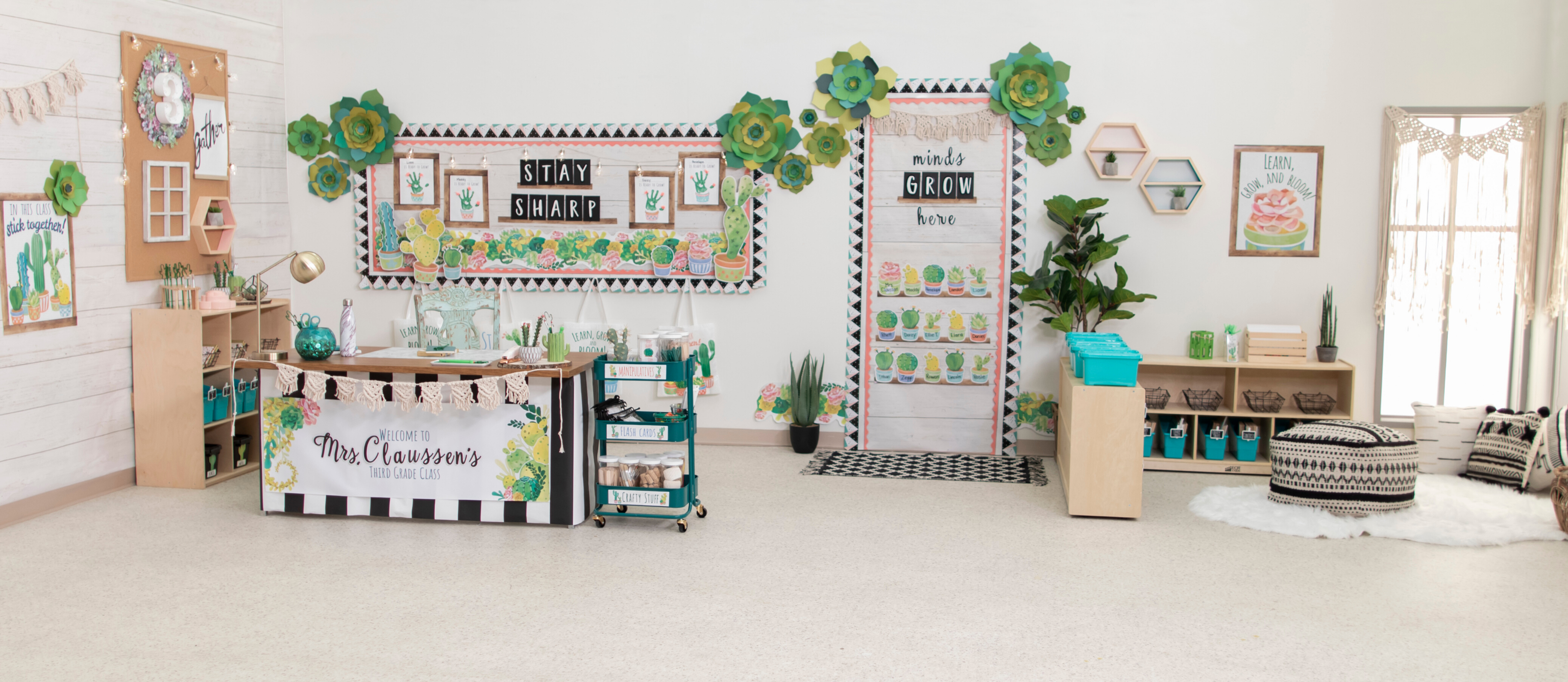Welcome to the world of succulent classroom decor! In this article, I’ll guide you through the process of integrating these charming plants into your classroom, sharing personal experiences, tips, and creative ideas. Let’s dive into how succulents can not only beautify your learning environment but also promote a calming atmosphere for both students and teachers.

Why Choose Succulents for Classroom Decor?
Succulents are more than just aesthetically pleasing; they are resilient, low-maintenance plants that thrive in various environments. Here are some reasons why you should consider using succulents in your classroom:
- Low Maintenance: Succulents require minimal watering and care, making them ideal for busy teachers.
- Air Quality Improvement: These plants can help purify the air, creating a healthier space for learning.
- Stress Reduction: The presence of greenery has been shown to lower stress levels.
- Educational Opportunities: Incorporating plants can lead to lessons about biology, ecology, and responsibility.

Types of Succulents Perfect for Classrooms

When selecting succulents for your classroom, consider the following varieties for their unique attributes and ease of care:
1. Echeveria
Echeveria is known for its rosette shape and vibrant colors, making it a beautiful addition to your decor.

2. Aloe Vera
Aloe Vera not only looks great but can also be used for its healing properties in minor cuts and burns.
3. Jade Plant
The jade plant is a symbol of good luck and prosperity, making it a positive presence in the classroom.

4. Haworthia
This hardy succulent is perfect for low light conditions, making it great for classrooms with limited natural light.
5. Sedum
Known for its variety of shapes and sizes, Sedum can add diversity to your succulent collection.

How to Incorporate Succulents into Your Classroom Decor?
Creative Display Ideas
Here are some fun and creative ways to display succulents in your classroom:
- Terrariums: Create mini ecosystems with glass containers filled with soil and stones.
- Wall Planters: Use vertical space with wall-mounted planters for a unique look.
- Desk Arrangements: Place small pots on desks or shelves for an approachable touch.
- Succulent Centerpieces: Use larger succulents as centerpieces for group activities.
Using Succulents for Educational Activities
Succulents can also be incorporated into lessons and projects:
- Plant Care Projects: Assign students to take care of a succulent for a week to teach responsibility.
- Art Projects: Have students paint pots or create decorative designs for planters.
- Biology Lessons: Use succulents to explain photosynthesis and plant anatomy.
Creating a Succulent-Themed Classroom
Elevate your classroom decor with a cohesive succulent theme. Here are some styling tips:
Color Palette
Opt for colors that complement the hues of your succulents, such as earthy browns and soft greens.
Mixing Textures
Incorporate different materials like wood, metal, and ceramics to create an inviting atmosphere.
Interactive Elements
Include educational posters about succulents and their care to spark interest among students.
Benefits of Succulent Classroom Decor
Beyond aesthetics, having succulents in the classroom can lead to several advantages:
- Enhanced Focus: Students often perform better in environments that are pleasant and stimulating.
- Fostering Creativity: A natural setting can inspire creative thinking and engagement.
- Community Building: Caring for class plants can instill a sense of community among students.
Pros and Cons of Using Succulents in the Classroom
Pros
- Low maintenance; requires minimal care.
- Enhances air quality.
- Visually appealing and versatile.
- Can be used for educational purposes.
Cons
- Some varieties may not thrive in low light.
- Overwatering can lead to root rot.
- May require occasional pest control.
Succulent Care Tips for Classrooms
Watering Guidelines
Always allow the soil to dry out between waterings. A general rule of thumb is to water every 2-3 weeks, depending on humidity levels.
Lighting Requirements
Ensure succulents get plenty of indirect sunlight. If the classroom has limited natural light, consider using grow lights.
Soil and Fertilization
Use well-draining soil specifically designed for succulents. Fertilize sparingly, usually during the growing season.
Comparison Table of Popular Succulents for Classrooms
| Succlent Type | Light Needs | Watering Frequency | Size | Common Issues |
|---|---|---|---|---|
| Echeveria | Bright, indirect light | Every 2-3 weeks | Small to medium | Pest infestations (mealybugs) |
| Aloe Vera | Bright, indirect light | Every 3 weeks | Medium | Root rot if overwatered |
| Jade Plant | Bright, direct light | Every 2-3 weeks | Medium to large | Leaf drop from overwatering |
| Haworthia | Low to bright, indirect light | Every 2-4 weeks | Small | Too much moisture can cause rot |
| Sedum | Full sun | Every 2-3 weeks | Varies | Susceptible to aphids |
FAQs About Succulent Classroom Decor
1. Can succulents survive in a classroom with low light?
Yes, some succulents like Haworthia can tolerate low light conditions, but most will thrive best in bright, indirect sunlight.
2. How often should I water my classroom succulents?
Typically, succulents should be watered every 2-3 weeks, allowing the soil to dry out completely between waterings.
3. Are succulents safe for children?
Most succulents are safe, but it’s important to check for any specific varieties that may be toxic. Aloe Vera is safe but can cause mild digestive issues if ingested.
4. What is the best soil for succulents?
Use a well-draining soil mix formulated for succulents or cacti to prevent root rot.
5. Can I use decorative pots for my succulents?
Absolutely! Just ensure the pots have drainage holes to allow excess water to escape.